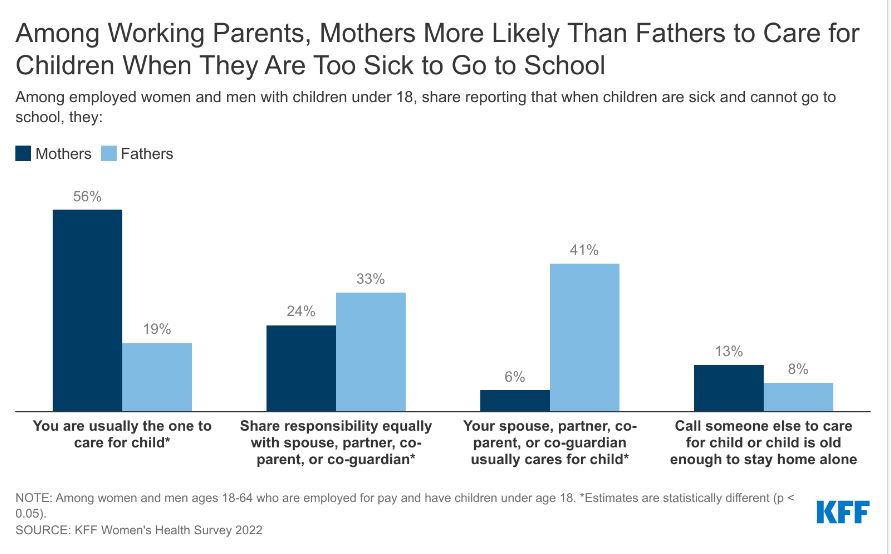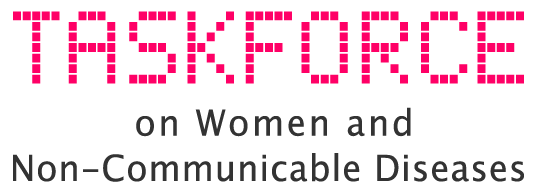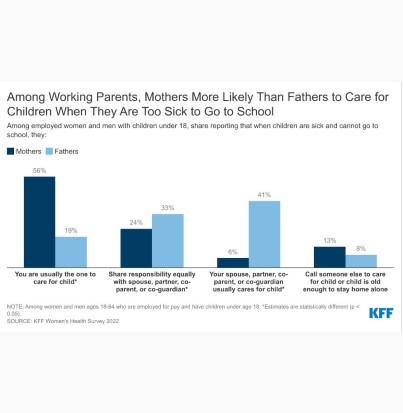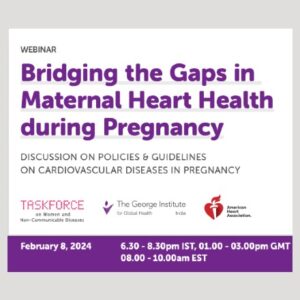Women—Particularly Working Moms—Shoulder Most of the Responsibility for Caring for Sick Children
A new KFF analysis finds that fewer than half of employed women ages 18-64 say their employer offers a paid parental leave benefit, such as maternity or paternity leave (43%) or family and medical leave (44%). Access to these workplace benefits varies widely by employment status, income, location, and level of education. Women who work full-time and have higher incomes are more likely than their part-time or low-income counterparts to say their employer offers any paid leave benefits.
During the COVID-19 pandemic, a lack of paid leave benefits has had significant implications for employed women with children, particularly mothers with low incomes. Among working parents, women continue to be the primary caregivers when their children are sick; compared to 19% of working fathers, 56% of working mothers report they are the ones to care for children when they are ill and cannot attend school. A higher share of mothers with low incomes (61%) say they are the ones to care for sick children compared to mothers with higher incomes (53%). Among working mothers who must stay home to care for sick children, 76% of those with low incomes (below 200% of the federal poverty level) report losing pay when they miss work to care for sick children, twice the share of mothers with higher incomes (38%).

These findings come from the 2022 KFF Women’s Health Survey, which examines several topics related to women’s health and well-being. The analysis is based on a nationally representative sample of 5,145 women and 1,225 men ages 18-64. The data presented are based on survey respondents’ self-identified gender as a “woman” or “man.” Non-cisgendered people are included in the survey but are not reported here because of an insufficient sample size.
Additional findings include the following:
- Forty-nine percent of employed women with higher incomes say their employer offers paid family and medical leave compared to 33% of women with lower incomes.
- Seventy-three percent of women who are employed full-time report that their employer offers paid sick leave, compared to 31% who work part-time.
- The share of fathers who say they usually take care of sick children who cannot attend school has doubled in the past two years, rising from 9% in 2020 to 19% in 2022. While the share grew, more than half of mothers (56%) said they take responsibility for the children who must stay home from school because of illness.
Learn more about these 2022 Women’s Health Survey findings in the brief “Workplace Benefits and Family Health Care Responsibilities.”




